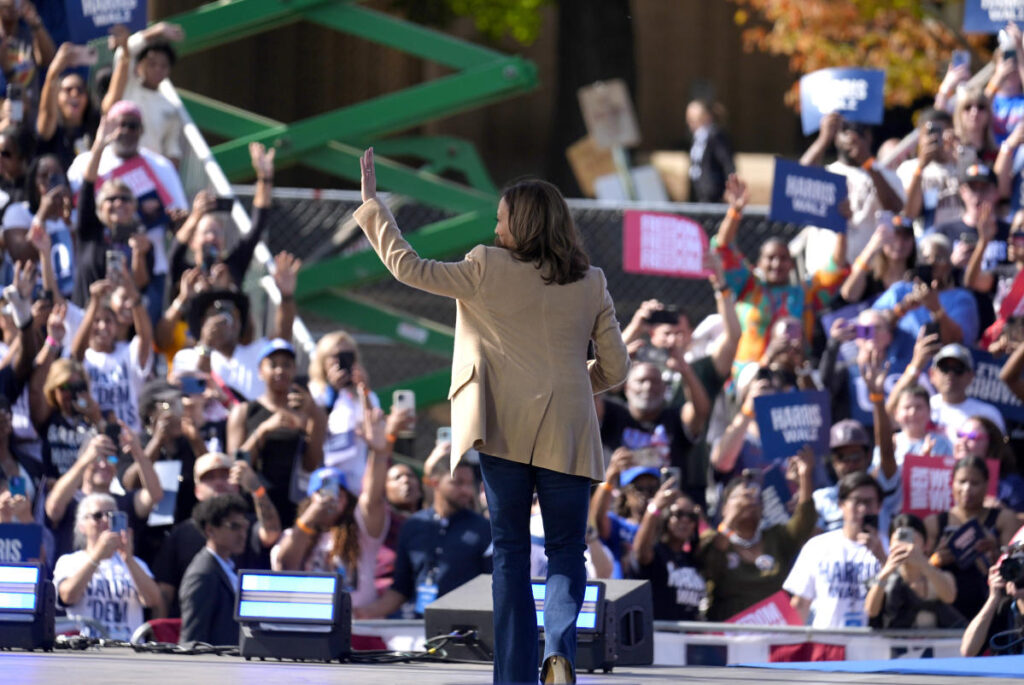In the lead-up to Election Day, Vice President Kamala Harris has strategically focused her campaign efforts on pivotal swing states, particularly in the battleground regions of the South and West: Georgia, North Carolina, Arizona, and Nevada. Each of these states is currently tightly contested, showcasing a notable shift in Democratic prospects compared to when President Joe Biden initially campaigned, when these areas seemed all but out of reach. Harris’s approach aims to mobilize support across diverse demographics, especially among white suburban voters who have shown increased interest, potentially setting the stage for a competitive election.
Harris’s recent campaign activities included rallies in Atlanta and stops in North Carolina, aiming to engage directly with supporters. The Democratic Party has made significant strides in galvanizing young voters and voters of color since Biden’s campaign, with recent polls indicating that Harris’s support among these groups is improving, albeit still uncertain. While both parties recognize the importance of these demographics, the vice president’s potential for success may hinge on attracting college-educated suburbanites, particularly women, who are increasingly drawn to progressive platforms featuring abortion rights and democratic integrity.
Polling data reflects both challenges and opportunities for Harris. While she appears to have a strong hold on Black and younger voters, her percentages lag behind Biden’s 2020 performance in these areas, raising questions about her ability to secure the necessary voter turnout. Conversely, her figures among white, college-educated voters have surpassed Biden’s, indicating a shift that might enhance Democratic prospects in key states. Although traditional Democratic strongholds like the Rust Belt have been more reliable for the party historically, Harris’s focus on the Sun Belt represents a crucial pivot in strategy.
Key details in Harris’s campaign schedule reveal a deliberate approach to resource allocation, where she dedicates considerable time to the Sun Belt states while also maintaining a presence in battleground states of the Rust Belt. Democratic strategists acknowledge that while the Blue Wall states have been reliable for decades, the emerging strength in the South and West must not be dismissed. Harris’s campaign emphasizes their commitment to these regions as shown by her extensive campaigning and resource investment, suggesting a belief in their viability as pathways to electoral success.
Recent early voting trends in Georgia and North Carolina indicate potential optimism for Harris’s campaign. Notably, Black voters have made up a significant portion of early ballots cast, aligning with 2020 numbers. In North Carolina, the unexpected campaign efforts from former President Donald Trump may signal his concern over the Democratic momentum. The Harris campaign has also detected a shift in voter sentiment with growth in support among younger Latino voters and Black men, fueling a belief that many potential voters have yet to turn out, ultimately favoring their chances on Election Day.
Meanwhile, the situation in the West, particularly Nevada and Arizona, remains complicated. Both campaigns acknowledge the uncertainty regarding young and Latino voter turnout, as well as the influence of independent voters in determining outcomes. Although there remain significant hurdles, Harris’s ability to court both moderate Republicans and independents may play a critical role in securing her position. As strategic forecasts evolve, both parties are keenly aware that the shifting dynamics in these states could lead to unexpected outcomes, rendering Harris a formidable candidate as the election approaches.

